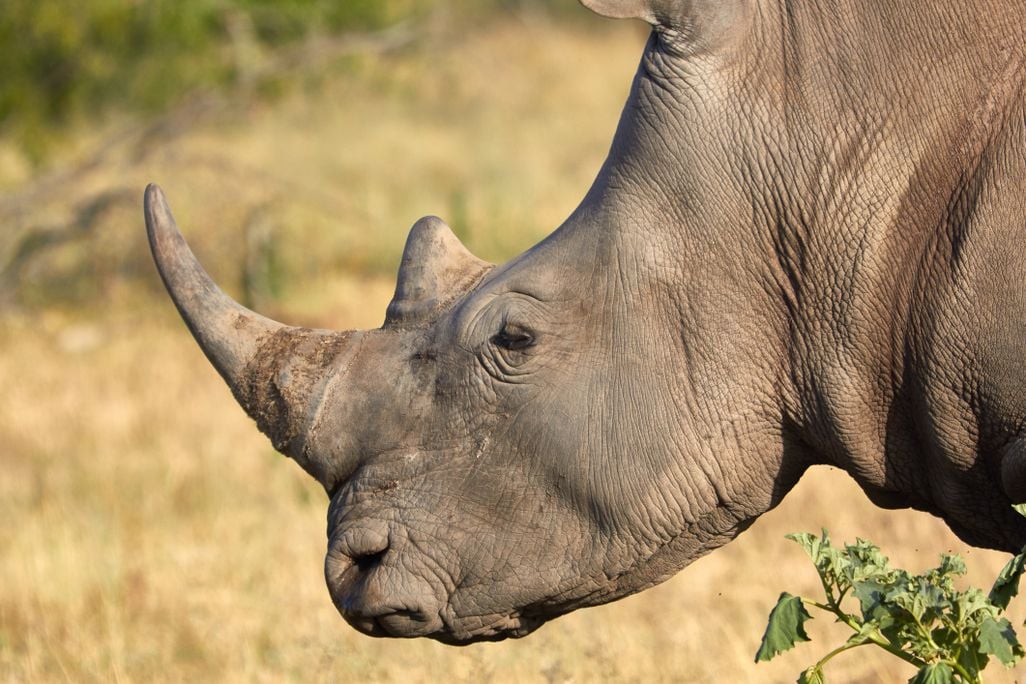
Two new papers analyze fossils found in Canada and Kenya, respectively—vastly different environments for the preservation of genetic material

Scientists sequenced ancient proteins in a tooth from a prehistoric rhino relative that had been preserved in Canada’s High Arctic for up to 24 million years.
Lennart van den Berg / 500px via Getty Images
Two new studies sequencing proteins from ancient animal teeth have pushed back the oldest studied proteins by millions of years—with one of the papers describing proteins from the tooth of an extinct rhino relative that dates to more than 20 million years ago. The papers, both published in the journal Nature, promise to move the entire field of paleoproteomics, the study of ancient proteins, forward.
“You’re just opening up a whole new set of questions that paleontologists never thought they could get near,” says Matthew Collins, a paleoproteomics specialist who was not involved in either study, to Ewen Callaway at Nature.
Scientists routinely use DNA to identify prehistoric fossils, but because of the rate at which this genetic material degrades, the oldest recorded DNA, found in sediments from Greenland, is only about two million years old.
But proteins are hardier than DNA, so scientists can use them to gather information about fossils from much longer ago.
“Ancient proteins can tell us about an organism’s evolutionary history by providing molecular data from specimens too old for DNA preservation. This allows researchers to clarify evolutionary relationships across the tree of life, even for species that went extinct millions of years ago,” explains Ryan Sinclair Paterson, a postdoctoral researcher at the University of Copenhagen’s Globe Institute and lead author of one of the fossil studies, to Will Dunham at Reuters.
Key question: What can scientists learn from ancient proteins?
Ancient proteins don’t contain quite as detailed information as ancient DNA, but they have revealed the sex of ancient human relatives and might shed light on a species’ diet and evolution.
In their study, Paterson and his team extracted and sequenced ancient enamel from teeth preserved in the frigid conditions of Canada’s High Arctic. One tooth, identified as belonging to an ancestor of the modern rhinoceros, was dated to a record-setting 21 million to 24 million years old. The team compared the new genetic data with sequences from modern rhinos and extinct relatives and found that two subfamilies of rhinos diverged earlier than previously thought.
A rhino tooth fossil found in Canada’s High Arctic region/https://tf-cmsv2-smithsonianmag-media.s3.amazonaws.com/filer_public/56/f8/56f82c0f-bf17-4e60-9385-e6aa1f90ac2b/ancient-rhino-tooth-he.jpg)
The second study, based on rhino, hippo and elephant teeth found in Kenya’s Turkana Basin, was led by researchers from the Smithsonian’s Museum Conservation Institute and Harvard University. They relied on a method called data-independent acquisition to find peptide fragments from fossils, which they dated to between 1.5 million and 18 million years ago.
Proteins in environments near the tropics, such as Kenya, do not preserve very easily. As such, “being able to show that we can get back to 18 million years in this kind of really hot, harsh environment, really shows that the world is open for working on paleoproteomics,” Timothy Cleland, one of the Kenya study’s lead authors and a physical scientist at the Smithsonian’s Museum Conservation Institute, says to Nature.
But Michael Price at Science reports that while the Canada study was well-received by outside researchers, several experts have raised doubts about the work with the Kenya fossils. Scientists have long thought that cold environments are necessary to preserve proteins over time, making Africa an unlikely place for recovering old proteins.
Evan Saitta, a researcher at the Field Museum of Natural History who was not involved in the studies, tells CNN’s Katie Hunt that it was “shocking” to hear scientists had found intact proteins from the fossils in a hot environment, and the finding will need to be replicated to increase his confidence in it.
“If that is a true result … it should be very easy to replicate,” Saitta says to CNN. “We should be able to go around all different fossil sites all over the world and find enamel peptides (proteins).”
Additionally, scientists note the methodology used in the Kenya paper is complex and relies on certain assumptions that could make it prone to error, per Science. Cleland defended his work, however, telling the publication that the team also used a different method, known as data-dependent acquisition, with a sample dating to 1.5 million years ago and got the same result.
Paleoproteomics has faced scrutiny in the past. Previous papers that purported to describe proteins from 68-million-year-old and 80-million-year-old dinosaur fossils were met with skepticism and pushback by academics, reports Nature. That’s why, prior to these new papers, the oldest widely accepted date for sequenced ancient proteins was around 3.5 million years ago.
Still, the authors of both studies and other researchers hope that one day paleoproteomic techniques can be used to study even earlier samples, such as from the oldest human ancestors.
And from Arctic specimens, “maybe we can retrieve proteins that belong to dinosaurs,” says Enrico Cappellini, a paleogeneticist at the University of Copenhagen who co-led the Canada study, to Science. “With these results, we can start to think about this—and not consider it science fiction.”
Daniel Green, who led the Kenya study with Cleland, echoes that sentiment to Reuters. “Newer and better methods for extracting and detecting ancient proteins could, perhaps, push paleoproteomics into the Mesozoic.”

/https://tf-cmsv2-smithsonianmag-media.s3.amazonaws.com/accounts/headshot/Sara_-_Headshot_thumbnail.png)






